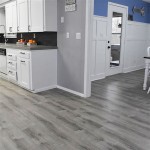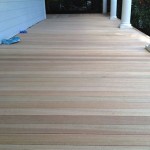The Best Way to Install Engineered Hardwood Flooring
Engineered hardwood flooring has gained immense popularity due to its durability, stability, and attractive appearance. It's a versatile option for various residential and commercial spaces, offering a natural wood look without the high maintenance demands of solid hardwood. Installing engineered hardwood flooring can be a rewarding DIY project, but it requires careful planning and execution to achieve a professional and long-lasting result. This article will delve into the best way to install engineered hardwood flooring, providing a comprehensive guide to ensure a successful installation.
1. Preparation is Key: A Solid Foundation for Your Flooring
Before embarking on the installation process, meticulous preparation is crucial. The success of your engineered hardwood flooring hinges on a stable and level subfloor. Here's how to ensure a solid foundation:
-
Inspect the Existing Subfloor:
Start by carefully evaluating the condition of your existing subfloor. Check for any unevenness, cracks, or soft spots that could compromise the integrity of the flooring. Repair any damaged areas using plywood or a suitable leveling compound. -
Ensure Levelness:
An uneven subfloor will lead to sagging, squeaking, and a less-than-ideal finished look. Use a level and a straightedge to check for any significant dips or bumps. If necessary, use a leveling compound to create a smooth and level surface. -
Moisture Barrier:
In areas prone to moisture, such as basements or bathrooms, install a moisture barrier before laying down the subfloor. A polyethylene sheet or other suitable moisture-resistant material will help prevent warping or damage to the engineered hardwood.
A properly prepared subfloor serves as the bedrock for your engineered hardwood installation, ensuring that the floor is stable, level, and free from potential problems.
2. Acclimation - Adapting to Your Environment
Engineered hardwood flooring, despite its engineered nature, is still susceptible to changes in humidity and temperature. Acclimation is an essential step that allows the flooring to adjust to the environment of its intended location. This helps minimize expansion and contraction that can lead to gaps, buckling, or other installation issues.
-
Timeframe:
The acclimation period usually takes around 48 to 72 hours, depending on the humidity and temperature of the room. Open all windows and doors to allow the flooring to acclimate to the specific environment where it will be installed. -
Storage:
Store the flooring in the room where it will be installed, stacked flat in a well-ventilated area. Avoid storing it in direct sunlight or extreme temperatures. -
Pay Attention to Humidity:
Monitor the humidity levels in the room during acclimation. Ideally, the humidity should be between 30% and 50% for most engineered hardwood flooring.
Proper acclimation ensures that the flooring adapts to the room's environment, minimizing potential problems during and after installation.
3. Laying the Floor: Techniques for a Seamless Installation
After the acclimation period, you're ready to begin laying the flooring. The installation method will depend on the specific type of engineered hardwood you've chosen. Here are some common methods:
-
Floating Installation:
This method involves laying the planks together using a tongue-and-groove system, without any adhesive or nails. It's a relatively easy process that allows for some expansion and contraction. -
Glue-Down Installation:
For a permanently fixed installation, glue-down methods use a specialized adhesive to bond the planks to the subfloor. This provides a secure and durable finish. -
Nail-Down Installation:
Some engineered hardwood flooring is designed for nail-down installations. This method uses specialized nails or cleats to secure the planks to the subfloor.
Whichever method you choose, ensure you follow the manufacturer's instructions carefully. Use a tapping block and a rubber mallet to gently tap the planks into place, avoiding damage to the flooring. Be mindful of any expansion gaps required around the perimeter of the room.
Installing engineered hardwood flooring is a rewarding process that can significantly enhance the aesthetics and value of your home. By adhering to these essential steps, you can achieve a professional and long-lasting installation that will be enjoyed for years to come.

How To Install Lock Engineered Hardwood Flooring

How To Install Lock Engineered Hardwood Flooring

How To Install Lock Engineered Hardwood Flooring

How To Install An Engineered Hardwood Floor

How To Fit Engineered Wood Flooring Manufacturer

Installing Engineered Hardwood On Concrete Twenty Oak

How To Install Lock Engineered Hardwood Flooring

How To Install Lock Engineered Hardwood Flooring

Guide How To Install Engineered Hardwood Floors

Tips For Installing An Engineered Hardwood Floor From The Forest Llc
Related Posts








